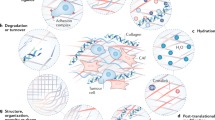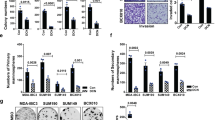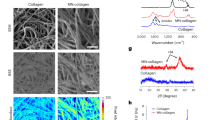Abstract
Cartilage oligomeric matrix protein (COMP) is a soluble pentameric protein expressed in cartilage and involved in collagen organization. Tissue microarrays derived from two cohorts of patients with breast cancer (n=122 and n=498) were immunostained, revealing varying expression of COMP, both in the tumor cells and surrounding stroma. High levels of COMP in tumor cells correlated, independently of other variables, with poor survival and decreased recurrence-free survival. Breast cancer cells, MDA-MB-231, stably expressing COMP were injected into the mammary fat pad of SCID (CB-17/Icr-Prkdcscid/Rj) mice. Tumors expressing COMP were significantly larger and were more prone to metastasize as compared with control, mock-transfected, tumors. In vitro experiments confirmed that COMP-expressing cells had a more invasive phenotype, which could in part be attributed to an upregulation of matrix metalloprotease-9. Furthermore, microarray analyses of gene expression in tumors formed in vivo showed that COMP expression induced higher expression of genes protecting against endoplasmic reticulum stress. This observation was confirmed in vitro as COMP-expressing cells showed better survival as well as a higher rate of protein synthesis when treated with brefeldin A, compared with control cells. Further, COMP-expressing cells appeared to undergo a metabolic switch, that is, a Warburg effect. Thus, in vitro measurement of cell respiration indicated decreased mitochondrial metabolism. In conclusion, COMP is a novel biomarker in breast cancer, which contributes to the severity of the disease by metabolic switching and increasing invasiveness and tumor cell viability, leading to reduced survival in animal models and human patients.
This is a preview of subscription content, access via your institution
Access options
Subscribe to this journal
Receive 50 print issues and online access
$259.00 per year
only $5.18 per issue
Buy this article
- Purchase on Springer Link
- Instant access to full article PDF
Prices may be subject to local taxes which are calculated during checkout





Similar content being viewed by others
Accession codes
References
Anderson BO, Yip CH, Smith RA, Shyyan R, Sener SF, Eniu A et al. Guideline implementation for breast healthcare in low-income and middle-income countries: overview of the Breast Health Global Initiative Global Summit 2007. Cancer 2008; 113: 2221–2243.
Hedbom E, Antonsson P, Hjerpe A, Aeschlimann D, Paulsson M, Rosa-Pimentel E et al. Cartilage matrix proteins. An acidic oligomeric protein (COMP) detected only in cartilage. J Biol Chem 1992; 267: 6132–6136.
Farina G, Lemaire R, Korn JH, Widom RL . Cartilage oligomeric matrix protein is overexpressed by scleroderma dermal fibroblasts. Matrix Biol 2006; 25: 213–222.
Hesselstrand R, Kassner A, Heinegard D, Saxne T . COMP: a candidate molecule in the pathogenesis of systemic sclerosis with a potential as a disease marker. Ann Rheum Dis 2008; 67: 1242–1248.
Agarwal P, Schulz JN, Blumbach K, Andreasson K, Heinegard D, Paulsson M et al. Enhanced deposition of cartilage oligomeric matrix protein is a common feature in fibrotic skin pathologies. Matrix Biol 2013; 32: 325–331.
Adams JC . Thrombospondins: multifunctional regulators of cell interactions. Annu Rev Cell Dev Biol 2001; 17: 25–51.
Oldberg A, Antonsson P, Lindblom K, Heinegard D . COMP (cartilage oligomeric matrix protein) is structurally related to the thrombospondins. J Biol Chem 1992; 267: 22346–22350.
Barrett T, Suzek TO, Troup DB, Wilhite SE, Ngau WC, Ledoux P et al. NCBI GEO: mining millions of expression profiles—database and tools. Nucleic Acids Res 2005; 33: D562–D566.
Helczynska K, Larsson AM, Holmquist Mengelbier L, Bridges E, Fredlund E, Borgquist S et al. Hypoxia-inducible factor-2alpha correlates to distant recurrence and poor outcome in invasive breast cancer. Cancer Res 2008; 68: 9212–9220.
Lynch JM, Maillet M, Vanhoutte D, Schloemer A, Sargent MA, Blair NS et al. A thrombospondin-dependent pathway for a protective ER stress response. Cell 2012; 149: 1257–1268.
Zhang K, Kaufman RJ . From endoplasmic-reticulum stress to the inflammatory response. Nature 2008; 454: 455–462.
Urano F, Wang X, Bertolotti A, Zhang Y, Chung P, Harding HP et al. Coupling of stress in the ER to activation of JNK protein kinases by transmembrane protein kinase IRE1. Science 2000; 287: 664–666.
Nishitoh H, Matsuzawa A, Tobiume K, Saegusa K, Takeda K, Inoue K et al. ASK1 is essential for endoplasmic reticulum stress-induced neuronal cell death triggered by expanded polyglutamine repeats. Genes Dev 2002; 16: 1345–1355.
Hashimoto Y, Tomiyama T, Yamano Y, Mori H . Mutation (D472Y) in the type 3 repeat domain of cartilage oligomeric matrix protein affects its early vesicle trafficking in endoplasmic reticulum and induces apoptosis. Am J Pathol 2003; 163: 101–110.
Kung LH, Rajpar MH, Preziosi R, Briggs MD, Boot-Handford RP . Increased classical endoplasmic reticulum stress is sufficient to reduce chondrocyte proliferation rate in the growth plate and decrease bone growth. PLoS One 2015; 10: e0117016.
Briggs MD, Brock J, Ramsden SC, Bell PA . Genotype to phenotype correlations in cartilage oligomeric matrix protein associated chondrodysplasias. Eur J Hum Genet 2014; 22: 1278–1282.
Sodersten F, Ekman S, Schmitz M, Paulsson M, Zaucke F . Thrombospondin-4 and cartilage oligomeric matrix protein form heterooligomers in equine tendon. Connect Tissue Res 2006; 47: 85–91.
Gatenby RA, Gillies RJ . Why do cancers have high aerobic glycolysis? Nat Rev Cancer 2004; 4: 891–899.
Cairns RA, Harris IS, Mak TW . Regulation of cancer cell metabolism. Nat Rev Cancer 2011; 11: 85–95.
Hanahan D, Weinberg RA . Hallmarks of cancer: the next generation. Cell 2011; 144: 646–674.
Happonen KE, Saxne T, Aspberg A, Morgelin M, Heinegard D, Blom AM . Regulation of complement by cartilage oligomeric matrix protein allows for a novel molecular diagnostic principle in rheumatoid arthritis. Arthritis Rheum 2010; 62: 3574–3583.
Svensson KJ, Christianson HC, Kucharzewska P, Fagerstrom V, Lundstedt L, Borgquist S et al. Chondroitin sulfate expression predicts poor outcome in breast cancer. Int J Oncol 2011; 39: 1421–1428.
Borgquist S, Jogi A, Ponten F, Ryden L, Brennan DJ, Jirstrom K . Prognostic impact of tumour-specific HMG-CoA reductase expression in primary breast cancer. Breast Cancer Res 2008; 10: R79.
Borgquist S, Holm C, Stendahl M, Anagnostaki L, Landberg G, Jirstrom K . Oestrogen receptors alpha and beta show different associations to clinicopathological parameters and their co-expression might predict a better response to endocrine treatment in breast cancer. J Clin Pathol 2008; 61: 197–203.
Ryden L, Jirstrom K, Bendahl PO, Ferno M, Nordenskjold B, Stal O et al. Tumor-specific expression of vascular endothelial growth factor receptor 2 but not vascular endothelial growth factor or human epidermal growth factor receptor 2 is associated with impaired response to adjuvant tamoxifen in premenopausal breast cancer. J Clin Oncol 2005; 23: 4695–4704.
Furge K, Dykema K . 2012, PGSEA: parametric gene set enrichment analysis. R package version 1.42.0, 2012.
Vandesompele J, De Preter K, Pattyn F, Poppe B, Van Roy N, De Paepe A et al. Accurate normalization of real-time quantitative RT-PCR data by geometric averaging of multiple internal control genes. Genome Biol 2002; 3: RESEARCH0034.
Escudero-Esparza A, Jiang WG, Martin TA . Claudin-5 is involved in breast cancer cell motility through the N-WASP and ROCK signalling pathways. J Exp Clin Cancer Res 2012; 31: 43.
Englund E, Reitsma B, King BC, Escudero-Esparza A, Owen S, Orimo A et al. The human complement inhibitor Sushi Domain-Containing Protein 4 (SUSD4) expression in tumor cells and infiltrating T cells is associated with better prognosis of breast cancer patients. BMC Cancer 2015; 15: 737.
Kojima Y, Acar A, Eaton EN, Mellody KT, Scheel C, Ben-Porath I et al. Autocrine TGF-beta and stromal cell-derived factor-1 (SDF-1) signaling drives the evolution of tumor-promoting mammary stromal myofibroblasts. Proc Natl Acad Sci USA 2010; 107: 20009–20014.
Otteby KE, Holmquist E, Saxne T, Heinegard D, Hesselstrand R, Blom AM . Cartilage oligomeric matrix protein-induced complement activation in systemic sclerosis. Arthritis Res Ther 2013; 15: R215.
Acknowledgements
This work was supported by the Cancerfonden, the Swedish Research Council (K2012-66X-14928-09-5), the Swedish Government Funds for Clinical research (ALF) and the Foundations of Österlund, Crafoord, Greta and Johan Kock, King Gustav V’s 80th anniversary, Knut and Alice Wallenberg and Inga-Britt and Arne Lundberg, Royal Physiographic Society, as well as a grant from the Skåne University Hospital. MO was supported by National Science Centre, Poland (2014/14/E/NZ6/00182).
Author information
Authors and Affiliations
Corresponding author
Ethics declarations
Competing interests
The authors declare no conflict of interest.
Additional information
Supplementary Information accompanies this paper on the Oncogene website
Supplementary information
Rights and permissions
About this article
Cite this article
Englund, E., Bartoschek, M., Reitsma, B. et al. Cartilage oligomeric matrix protein contributes to the development and metastasis of breast cancer. Oncogene 35, 5585–5596 (2016). https://doi.org/10.1038/onc.2016.98
Received:
Revised:
Accepted:
Published:
Issue Date:
DOI: https://doi.org/10.1038/onc.2016.98
This article is cited by
-
Cartilage oligomeric matrix protein overexpression is an independent poor prognostic indicator in patients with intrahepatic cholangiocarcinoma
Scientific Reports (2023)
-
Lymph Node Dissection in Upper Tract Urothelial Carcinoma: Current Status and Future Perspectives
Current Oncology Reports (2023)
-
COMP Improves Ang-II-Induced Atrial Fibrillation via TGF-β Signaling Pathway
Cardiovascular Toxicology (2023)
-
The extracellular matrix alteration, implication in modulation of drug resistance mechanism: friends or foes?
Journal of Experimental & Clinical Cancer Research (2022)
-
Cartilage oligomeric matrix protein acts as a molecular biomarker in multiple cancer types
Clinical and Translational Oncology (2022)



